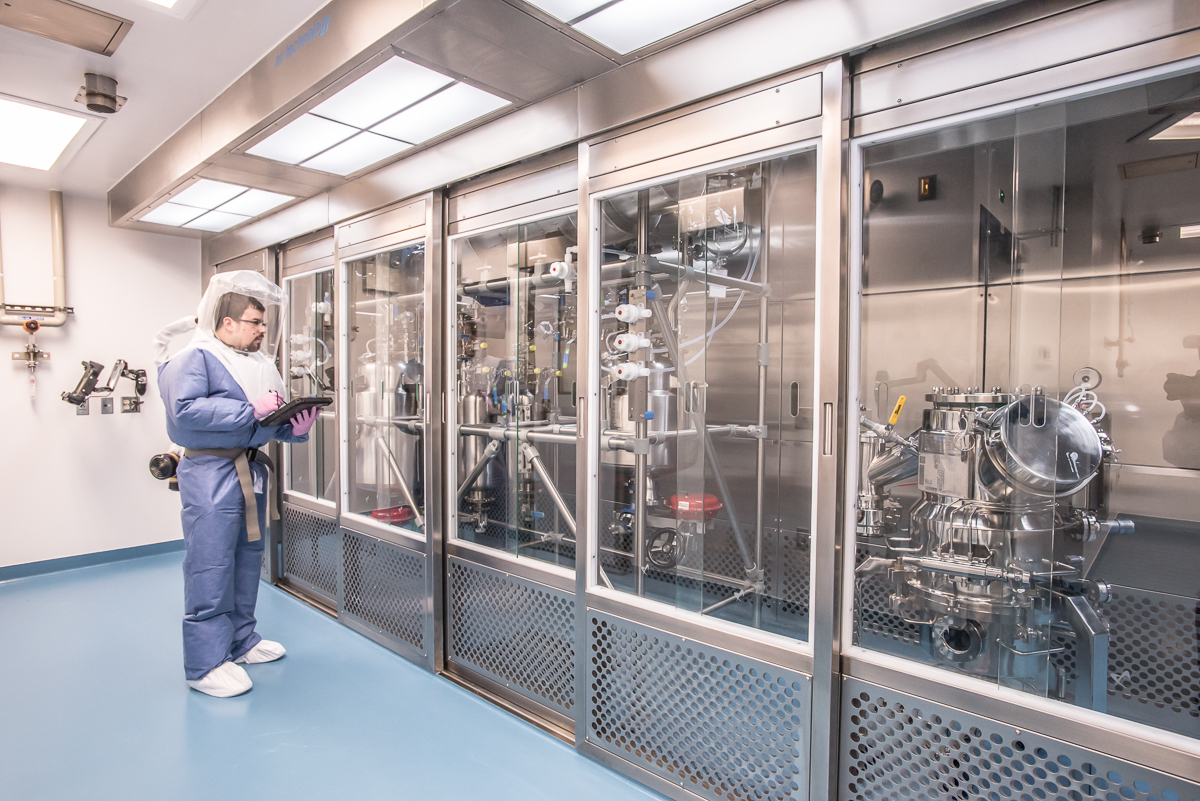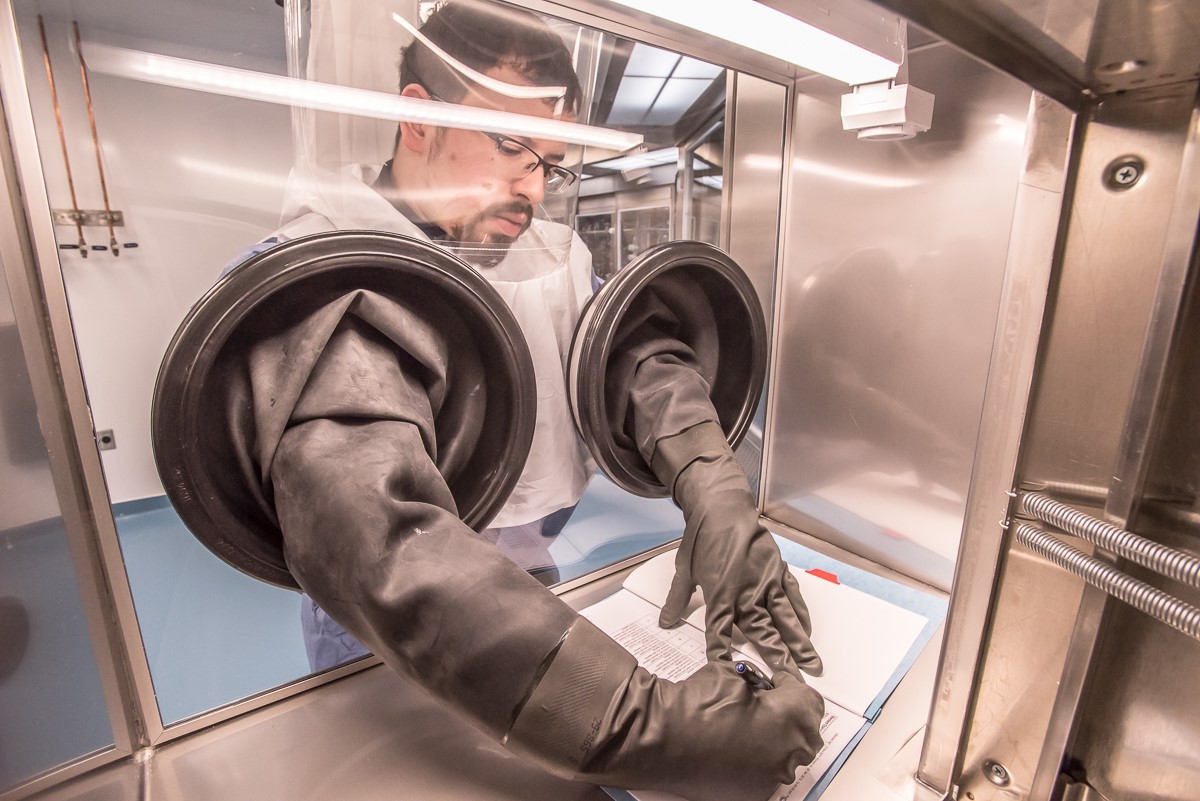Ready to Get Started?
HPAPI manufacturing is a demanding enterprise, but given the robust growth within this segment of the pharmaceutical industry, it is critical to have the right facilities and capabilities in place. Alcami has been dedicated to this pursuit, and our efforts culminated in the opening of our Germantown, WI, highly potent active pharmaceutical ingredient (HPAPI) facility. It is unquestionably state-of-the-art, so we took the opportunity to reflect: Which characteristics make it an industry-leading HPAPI facility?
1. State-of-the-art containment
Highly effective containment is the most important aspect of designing an HPAPI facility. While many high-potency manufacturers rely on personal protection equipment (PPE) for primary control, PPE should be a secondary or even tertiary measure within a state-of-the-art facility.
2. Holistic facility design
Equipment should be selected not only based on its ability to run needed chemical processes, but also for its ability to provide the required containment. The advantage of building from scratch, as Alcami’s Germantown facility was, is the ability to assess the entire system all the way back through the support
3. Focus on material transfer considerations
Weighing and dispensing of materials is one of the riskiest aspects of any high potency operation. Solid/powder materials are especially risky if the transfer ports are not parked perfectly. If
4. Design for purpose
The advantage of designing and building a facility specifically for high-potency manufacturing is that
5. Design for future need
The needs of today should be considered, of course, but what about the needs of tomorrow? Given the growth in the high-potency drug segment, there is limited capacity to meet the demand, both in overall capacity and in future capabilities. A flexible design allows for future technologies within the existing footprint. For example, the Alcami facility in Germantown was designed specifically to accommodate the potential future manufacturing of antibody drug conjugates. While the facility is not currently performing this kind of manufacturing, we keep an eye on the future during the design process.
6. Usage of modern technology & automation tools
Usage of programmable logic controller (PLC) system automation to efficiently and effectively manage all processes remotely is critical. Additionally, audio and visual sensors and alarm systems should be in place to assure that necessary containment levels are maintained. Utilizing technology to manage containment and monitor process performance is an expectation within a state-of-the-art HPAPI manufacturing facility.
7. Industrial hygiene validation
While some highly potent API facilities do not perform industrial hygiene surrogate studies and monitor ongoing process performance, this measure was important to Alcami to assure operations that meet and maintain the desired levels of containment.
Surrogate studies verify all of the containment is in place and functioning as it should, and generate data to show established containment standards are being met. These surrogate studies help ensure the facility is capable of handling compounds of given OEL levels. It is also used as a qualification method for operators working in that space. Ongoing monitoring and
8. Reduce supply chain risks by doing things right
The most pressing demand on a top-tier CDMO is that processes are developed in a way that substantially

MORE CONTENT ON HPAPI

3 min read
In this two-part blog series, Alcami Senior Director of Global Manufacturing Science and Technology, Adam Kujath, discusses the market forecasts and...

3 min read
In this two-part blog series, Alcami Senior Director of Global Manufacturing Science and Technology, Adam Kujath, discusses the market forecasts and...

3 min read
The highly potent active pharmaceutical ingredient (HPAPI) market is growing rapidly with no signs of slowing down. But what is it, how is the market...